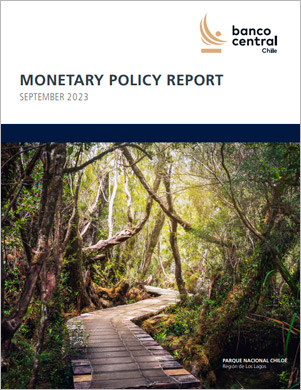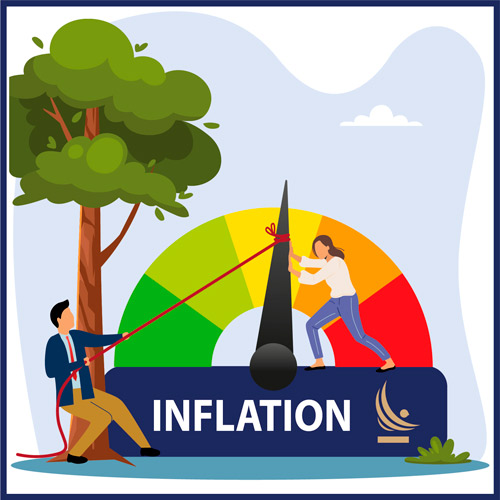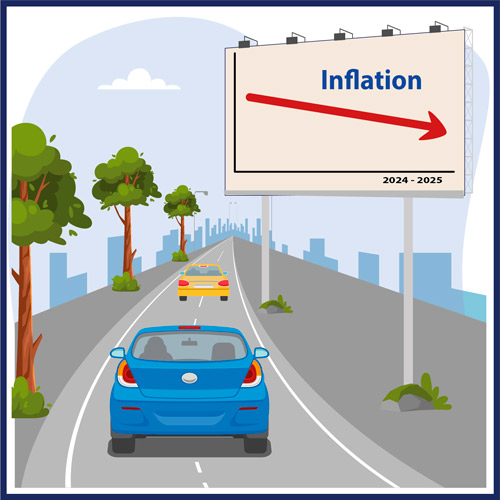Monetary Policy Report September 2023
Monetary Policy Report September 2023

Broadly speaking, the macroeconomic scenario has evolved in line with forecasts in the June Report. Inflation has continued to fall, although it is still high, in a context where activity and demand have continued to advance in their adjustment process, cost pressures have been reduced and two-year inflation expectations stand at 3%. This has allowed the Board to reduce the Monetary Policy Rate (MPR) by 175 basis points (bp) since July, to 9.5%. Although the decline in inflation is a global phenomenon, the outlook differs from one country to the next. Thus, while in some economies monetary policy is becoming less contractionary, in others a more prolonged tightening than anticipated is foreseen, particularly in the developed world. These divergences have been permeating global financial markets, with opposing movements in interest rates and depreciations in an important group of currencies, including the Chilean peso. The central scenario projections contain few changes with respect to our last Report. GDP will vary between -0.5 and 0% this year, to resume positive growth rates in the two subsequent years. Private consumption has stabilized and its projection is maintained, while investment is expected to contract somewhat less than expected this year. Headline inflation is expected to continue to decline, reaching 3% in the second half of 2024. Core inflation would do so in early 2025. If the central scenario projections of this Report materialize, in the short term the MPR will continue on the path outlined in the July Meeting. In any case, the magnitude and timing of the process of MPR reductions will take into account the evolution of the macroeconomic scenario and its implications for the inflation trajectory. Although the most extreme risk scenarios have been losing relevance, the process of inflationary convergence continues to pose significant challenges.
What does this MP Report tell us?

Inflation has continued to fall, although it remains high. The Central Bank’s monetary policy has played a significant role in this decline.

The Central Bank began lowering the benchmark rate, in line with the decline of inflation and the behavior of the economy.

Inflation has continued to fall, although it remains high. The Central Bank’s monetary policy has played a significant role in this decline.
- Inflation has continued to decline in recent months, from a peak of close to 14% annually in 2022, to 6.5% annually last July, yet still above the 3% target.
- A key factor in this decline has been the resolution of the economy’s cumulative imbalances of previous years, in which the Central Bank’s monetary policy has played a significant role.
- This couples with the moderation of cost pressures. This includes the pass-through of the lower dollar level compared to mid-2022, the reduction in global transportation fares and the lower external prices.
- Headline inflation will continue to decline and is expected to reach 3% in the second half of 2024. Core inflation will do so in early 2025.

The Central Bank began lowering the benchmark rate, in line with the decline of inflation and the behavior of the economy.
- The economy has evolved as foreseen by the Central Bank.
- The advances in its adjustment process and the contribution of other factors have made it possible to reduce inflation. Thus, the Central Bank has been able to start reducing the monetary policy interest rate (MPR).
- From July to date, the MPR accumulates a reduction of 175 basis points, from 11.25% to 9.5% annually.
- In this Report’s central scenario, the Board estimates that the benchmark rate will stand between 7.75% and 8%.
- The magnitude and timing of the MPR reduction process will continue to depend on the evolution of the macroeconomic scenario, always pursuing the objective of bringing inflation back to its target.

The outlook for 2024 assumes that the Chilean economy will grow again and inflation will return to the 3% target.
- Growth projections for Chile are largely unchanged from the previous Report.
- This year, the Chilean economy will see growth between -0.5 and 0.0%.
- Inflation is projected to end the year at 4.3% annually, to reach 3% in the second half of 2024.
- Towards 2024 and 2025, the economy will resume positive growth. Consumption and investment will recover as credit becomes less costly and incomes rise after the period of high inflation.

The Chilean economy continues to face important risks and the Central Bank will remain vigilant, always watching over the control of inflation.
- Risks continue to be mainly associated with a possible further deterioration of global conditions.
- Plus, there are growing doubts concerning the evolution of the Chinese economy.
- The Board of the Central Bank will remain vigilant to deal with any changes that may occur and will act swiftly in favor of people.
Presentations
- Presentación de Rosanna Costa, ante el Honorable Senado de la República
- Presentación de Rosanna Costa, realizada en Icare.
- Presentación de Alberto Naudon, en la Universidad Austral de Chile.
- Presentación de Luis Felipe Céspedes, en la Universidad de Concepción.
- Presentación de Stephany Griffith-Jones, en la FEN Universidad de Chile
- Presentación de Rosanna Costa, en Seminario organizado por la Facultad de Economía y Administración de la Pontificia Universidad Católica de Chile.
- Presentación de Alberto Naudon, en evento organizado por Banchile Inversiones.
- Presentación de Pablo García, en la Universidad de Los Andes
